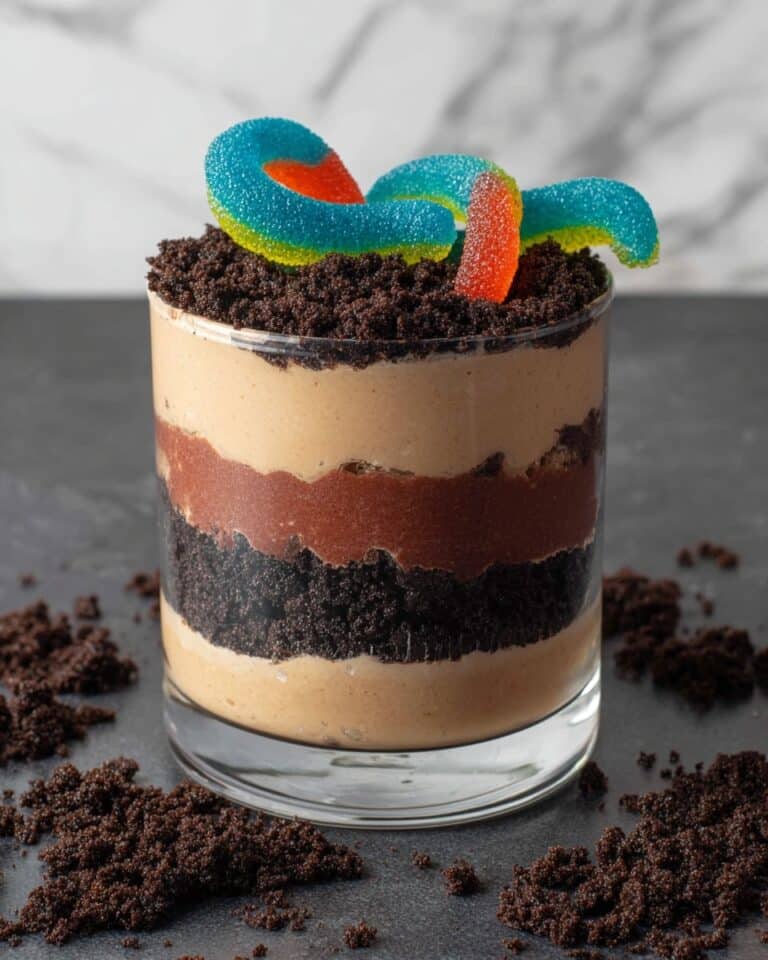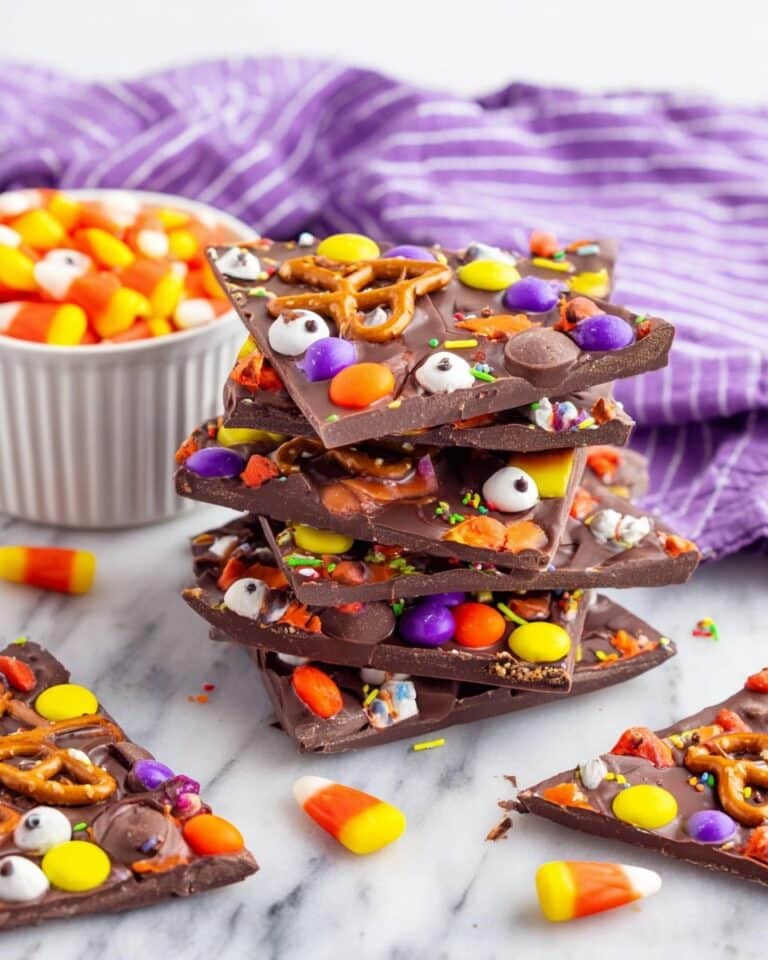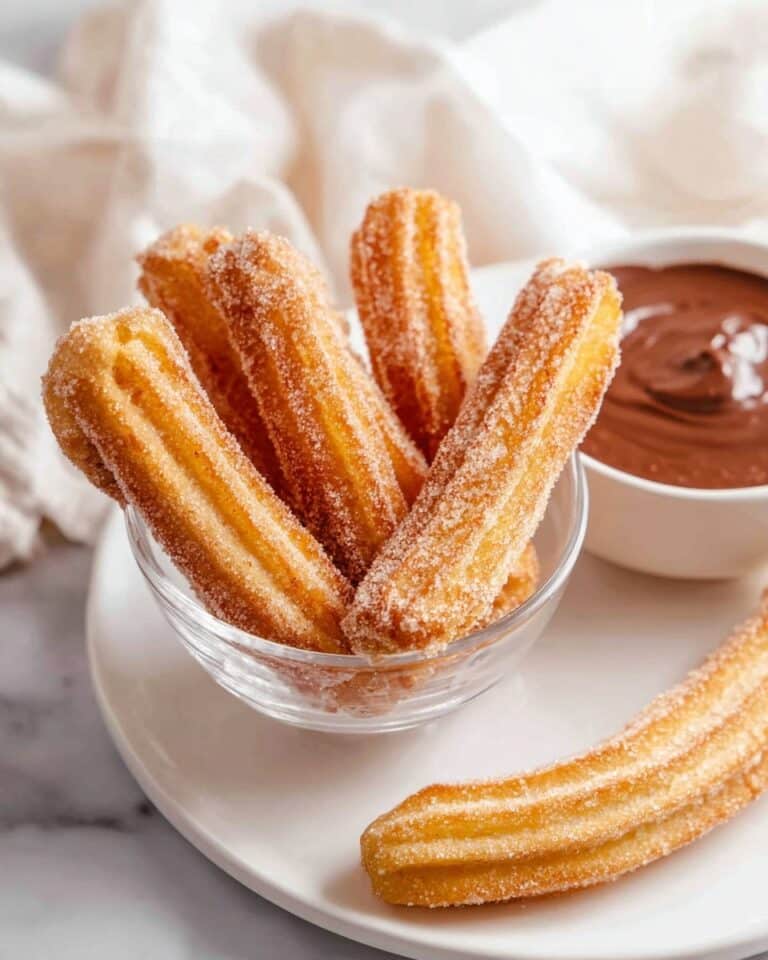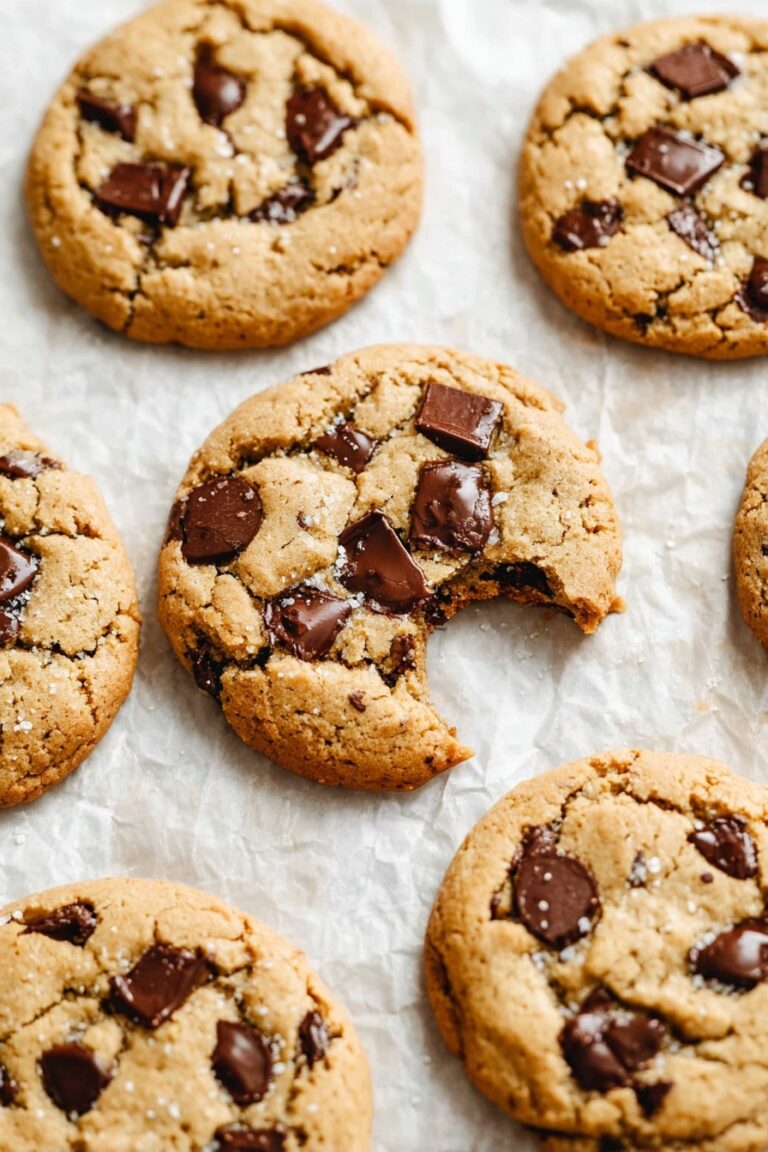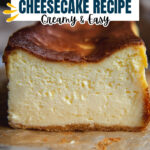Loaf Pan Basque Cheesecake Recipe
If you’re craving that perfectly creamy, caramelized cheesecake with an irresistible burnt top but don’t have a springform pan handy, I’ve got just the thing for you! This Loaf Pan Basque Cheesecake Recipe is my secret to making that gorgeously rustic dessert right in a regular loaf pan. It’s super simple, forgiving, and honestly, the best way to get a Basque cheesecake with that trademark charred flavor without the fuss. Stick around — I’ll walk you through every step to help you nail it on your first try!
Why This Recipe Works
- Simple Loaf Pan Setup: Using a loaf pan and parchment paper means no expensive springform pans needed, making it accessible for everyone.
- Creamy Yet Rustic: The high-fat cream cheese and heavy cream combo ensures a silky custard center with that signature caramelized crust.
- No Cracks, No Stress: This method is pretty forgiving—even if cracks appear, they add to the beautiful rustic charm.
- Flexible Baking Time: You get to control the doneness with the bake time, so you can choose your preferred creaminess level easily.
Ingredients & Why They Work
This Loaf Pan Basque Cheesecake Recipe blends simple ingredients that you might already have in your fridge, but the magic is in how they come together. Each brings a unique texture and flavor that balances richness, sweetness, and that subtle burnt edge we all love.
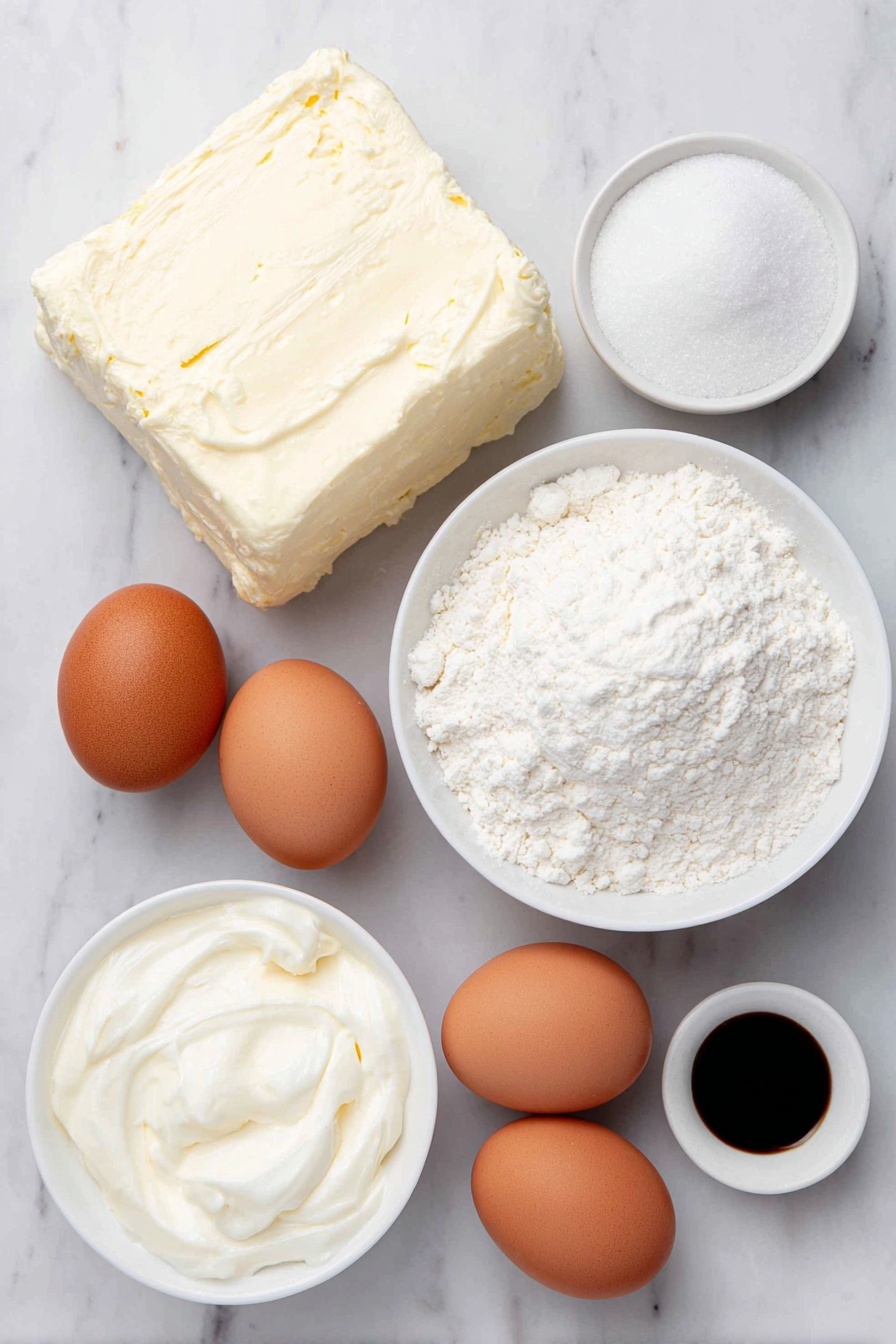
- Cream Cheese: Full-fat is key for that velvety smooth texture and rich flavor. I always take mine out ahead to soften—it works wonders for a lump-free batter.
- Granulated Sugar: Sweetens without overpowering, and helps with the caramelization on top.
- Eggs: They add structure while keeping the cheesecake custardy at the same time.
- Heavy Cream: Adds luscious creaminess and helps balance the dense cream cheese.
- Vanilla Extract (optional): A hint of vanilla brightens the overall flavor, but don’t stress if you don’t have it!
- Salt: Just a pinch to elevate all the flavors.
- All-Purpose Flour: Helps stabilize the cheesecake just enough for it to hold together without becoming dense.
Tweak to Your Taste
I love this Loaf Pan Basque Cheesecake Recipe as is, but it’s a wonderful base for experimenting. Feel free to customize based on what you have, your mood, or even dietary needs—it’s surprisingly adaptable.
- Flavor Boost: Once, I added some lemon zest which gave a bright, fresh punch that paired beautifully with the richness.
- Dairy Alternatives: For a lighter option, you can try a mix of cream cheese and ricotta, which makes the texture a bit fluffier.
- Gluten-Free Version: Swap out the flour for cornstarch or a gluten-free baking mix—just sift and incorporate gently as usual.
- Spiced Version: Add a teaspoon of cinnamon or cardamom for a warm twist that feels just like autumn in every bite.
Step-by-Step: How I Make Loaf Pan Basque Cheesecake Recipe
Step 1: Preparing the Loaf Pan Like a Pro
First things first: butter your 9×5-inch loaf pan lightly. This simple step helps the parchment paper stick snugly into the pan’s corners, creating a neat lining. I like to press the paper gently into the edges so the batter doesn’t leak underneath. Don’t forget to leave at least 2 inches of parchment hanging over the sides for easy lifting after baking—that’s a game-changer for cleanup and presentation.
Step 2: Mixing the Cream Cheese and Sugar to Perfection
Make sure your cream cheese is fully softened—this makes mixing smooth and lump-free. I use a hand-held mixer at low-medium speed for about 5 minutes, and this slow build helps me get a super creamy base. You can absolutely use a stand mixer, too, if you have one. This step is where the magic really starts happening.
Step 3: Adding Eggs One at a Time
Patience here pays off! Add the eggs individually, mixing after each addition until well blended. This method prevents curdling and keeps that batter silky smooth. If you dump them all at once, the texture can get grainy, and none of us want that.
Step 4: Bringing in the Cream, Vanilla, and Salt
Whisk in the heavy cream, vanilla extract (if you’re using it), and salt gently until everything is combined. The cream adds richness, and the little splash of vanilla makes a subtle but noticeable flavor boost—totally worth it if you have it handy.
Step 5: Sift and Stir in the Flour
Here’s a trick: don’t dump in the flour all at once. I sift small amounts over the batter, whisking gently between additions. This dusting technique keeps everything light and lump-free—flour isn’t the star here, but it has to spread evenly to do its job.
Step 6: Baking to Caramelized Perfection
Pour that gorgeous batter into your lined loaf pan, then bake at 400°F (200°C) for 40-45 minutes. Your nose and eyes are your guides here — you want that dark brown, almost burnt edge with a slightly lighter center that still jiggles a bit. The burnt top can seem intense at first, but it’s all part of the authentic Basque cheesecake charm. If your pan is very full, pop it on a baking sheet just in case—it’s better safe than sticky mess!
Step 7: Cooling and Chilling for Best Results
Once out of the oven, let it cool nicely on your countertop. It sets as it cools, becoming that perfect creamy firmness. Then cover and chill in the refrigerator for at least 2-4 hours—or overnight if you can wait that long! Trust me, patience makes it taste even better.
Pro Tips for Making Loaf Pan Basque Cheesecake Recipe
- Room Temperature Ingredients: Taking your cream cheese and eggs to room temp before mixing helps achieve a luscious, lump-free batter every time.
- Parchment Overhang: Don’t skip the generous parchment paper overhang—it makes lifting the cheesecake clean out of the loaf pan so much easier.
- Watch the Brownness: The darker the top, the better. Don’t worry if it looks almost burnt—that caramelized flavor is exactly what you want.
- Avoid Overfilling: Leave about half an inch space on top to prevent spills in the oven, especially with smaller loaf pans.
How to Serve Loaf Pan Basque Cheesecake Recipe

Garnishes
I keep it simple and let the cheesecake star shine, but I love adding just a sprinkle of flaky sea salt on top—it enhances the sweet and burnt notes beautifully. Sometimes, I add a handful of fresh berries or a drizzle of honey for a natural pop of color and sweetness. And if you’re feeling fancy? A dollop of lightly whipped cream or a few toasted almonds are absolutely gorgeous.
Side Dishes
Pair this Basque cheesecake with a fresh fruit salad or even a tangy compote like raspberry or blackberry. A cup of good coffee or black tea is my go-to—they balance the rich flavors perfectly. For brunch, it’s amazing alongside crispy bacon and savory quiche.
Creative Ways to Present
For special occasions, I slice the loaf cheesecake into thick, generous wedges and serve on rustic wooden boards with fresh herbs like mint or edible flowers. Sometimes, I place slices on individual plates with lacquered spoons for a beautiful, simple presentation. Another fun idea? Cut bite-sized cubes for dessert platters or party finger food—they’re always a hit!
Make Ahead and Storage
Storing Leftovers
After chilling, I wrap the cheesecake tightly with plastic wrap or transfer it to an airtight container. It keeps fabulously in the fridge for up to 4 days, and the flavors actually deepen over time. Just be sure to keep it chilled and covered to prevent it from absorbing fridge odors.
Freezing
If I need to stash some away for later, I slice the cheesecake first, then wrap each piece individually in plastic wrap and place it in a freezer bag. It freezes well for up to 2 months. When I’m ready to eat, I thaw overnight in the fridge — the texture stays wonderfully creamy.
Reheating
I don’t typically reheat this cheesecake since I prefer it cool and creamy, but if you want to serve it slightly warmer, a gentle 10-second zap in the microwave softens it just enough without melting it into a puddle. Just keep an eye on it!
FAQs
-
Can I use a different pan instead of a loaf pan for this Basque cheesecake?
Absolutely! A loaf pan is perfect for this recipe because of its size and shape, but you can also use a square or round cake pan with similar volume capacity. Just be mindful of the batter’s fill level and adjust baking time as necessary based on how deep your pan is.
-
Why does the top have to be so dark or burnt?
The burnt top caramelizes the sugars and adds that signature Basque cheesecake smokiness and rich depth of flavor. It might seem alarming at first, but that bitter-sweet contrast makes this cheesecake so unique and delicious.
-
Can I make this cheesecake without a mixer?
Yes, you can! It will just take a bit more elbow grease to get the cream cheese smooth and lump-free. Make sure your cream cheese is very soft and beat it well with a sturdy whisk or wooden spoon before adding the other ingredients.
-
What’s the best way to soften cream cheese quickly?
I like to slice the cream cheese into smaller chunks and let it sit at room temperature about 30-45 minutes before baking. If you’re in a hurry, you can microwave it in very short bursts (5-10 seconds), but be careful not to melt it.
-
Why do cracks form on Basque cheesecake, and are they a problem?
Cracks often happen because of the rustic texture and the way the cheesecake cools. Don’t worry—they’re totally normal and add to the charm of this style. They don’t affect taste or quality at all!
Final Thoughts
This Loaf Pan Basque Cheesecake Recipe has been such a wonderful find for me. It’s the perfect mix of simple ingredients, hands-off technique, and that incredible caramelized flavor I can’t get enough of. Making it in a loaf pan keeps things casual and accessible, plus it’s a crowd-pleaser every time. I hope you’ll enjoy the journey of baking this as much as I do sharing it with you—happy baking, and don’t forget to savor every spoonful!
Print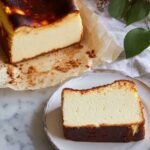
Loaf Pan Basque Cheesecake Recipe
- Prep Time: 15 minutes
- Cook Time: 45 minutes
- Total Time: 1 hour
- Yield: 12 servings
- Category: Dessert
- Method: Baking
- Cuisine: Spanish
Description
This Loaf Pan Basque Cheesecake is a creamy, caramelized dessert baked in a loaf pan for a rustic yet elegant look. It features a rich, smooth interior with a deeply browned, slightly burnt top that adds a wonderful contrast in flavor. Perfect for serving chilled, this cheesecake is simple to prepare using full-fat cream cheese, sugar, eggs, heavy cream, and a hint of vanilla.
Ingredients
Main Ingredients
- 1¾ lb full fat cream cheese bars (or 1 lb 12 oz), softened
- 1 cup granulated sugar
- 4 large eggs
- 1⅔ cup heavy cream
- 1 teaspoon vanilla extract (optional)
- ¼ teaspoon salt
- ¼ cup all-purpose flour
Instructions
- Preheat Oven. Set your oven to 400°F to prepare for baking the cheesecake.
- Prepare Loaf Pan. Lightly butter the inside of a 9×5-inch loaf pan. Lay a long strip of parchment paper across the pan, pressing it into the corners and ensuring at least 2 inches of overhang on all sides. Trim any excess parchment beyond this overhang.
- Mix Cream Cheese and Sugar. In a large mixing bowl, use a hand-held or stand mixer on low to medium speed to blend the softened cream cheese and sugar until smooth and creamy, about 5 minutes.
- Add Eggs. Incorporate the eggs one at a time, mixing thoroughly after each addition until fully combined.
- Add Remaining Wet Ingredients. Add the heavy cream, vanilla extract if using, and salt. Use a whisk to blend these together gently but thoroughly.
- Sift and Add Flour. Sift the all-purpose flour and gently stir it into the mixture to avoid lumps.
- Pour and Bake. Pour the batter into the prepared parchment-lined loaf pan. Bake for 45 minutes until the edges are dark brown and the center remains lighter and slightly wobbly.
- Cool and Refrigerate. Allow the cheesecake to cool fully on the counter. Cover and refrigerate for 2-4 hours or overnight to set before serving.
Notes
- Vanilla extract is optional but adds a subtle flavor if available.
- Use parchment paper, not wax paper, to prevent melting in the oven.
- Butter the pan before placing parchment paper to help it stick.
- Sift the flour in small amounts gradually to avoid lumps.
- The cheesecake’s top will caramelize to a dark brown, which is characteristic and desirable for Basque cheesecake.
- Adjust baking time if your loaf pan size differs; remove when edges are dark and center is lighter and slightly jiggly.
- Place the loaf pan on a baking sheet during baking to catch any overflow, especially if pan is very full.
- Cracks on the cheesecake surface are normal and add to its rustic appeal.
Nutrition
- Serving Size: 1 slice
- Calories: 350 kcal
- Sugar: 25 g
- Sodium: 150 mg
- Fat: 28 g
- Saturated Fat: 17 g
- Unsaturated Fat: 9 g
- Trans Fat: 0 g
- Carbohydrates: 20 g
- Fiber: 0 g
- Protein: 6 g
- Cholesterol: 120 mg


